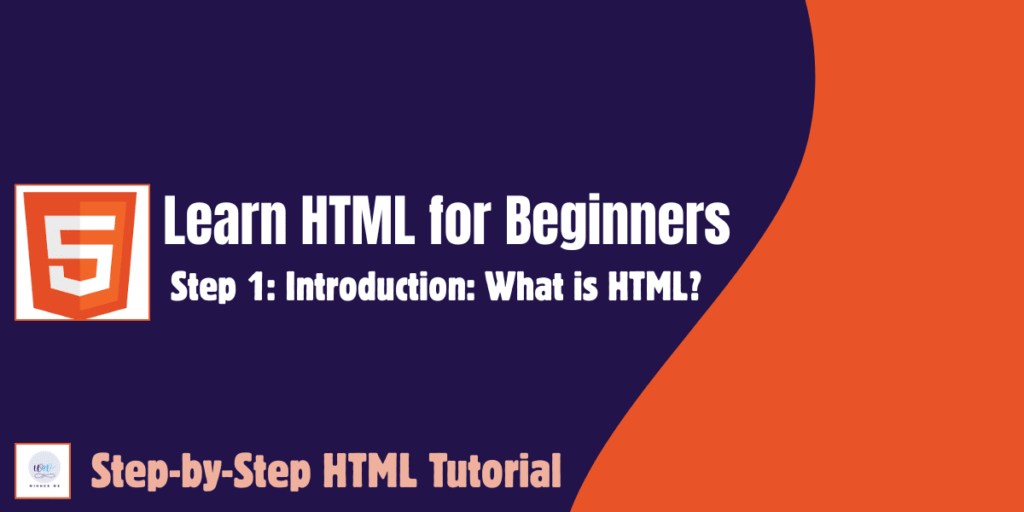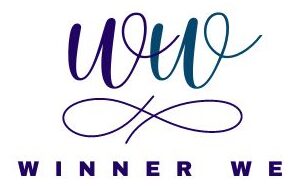
📝Learn HTML for Beginners: A Step-by-Step Guide to Start Web Development
📌 Learn HTML for Beginners | Step-by-Step HTML Tutorial
👋 Introduction: What is HTML?
HTML stands for HyperText Markup Language. It is the standard language used to create and design webpages. HTML describes the structure of a webpage using various elements and tags.
Think of HTML as the skeleton of a website — it provides structure and tells the browser how to display content.
When you visit any website, everything you see — the text, images, buttons, and layout — is displayed using HTML.
Whether you’re a student, job seeker, or future web developer, learning HTML is the first step toward mastering web development.
📢 If you want to become a web developer, front-end designer, or even a content creator, HTML is the first language you must learn.
🧠 Why Learn HTML?
Before we dive into writing HTML, let’s understand why learning it is important:
-
🛠️ Foundation of the Web – Every website starts with HTML.
-
🌐 Universal Skill – Used by web designers, developers, and content creators.
-
💼 Career Growth – In-demand skill for tech jobs.
-
👶 Easy to Learn – No coding experience required!
| 💡 Reason | 📄 Description |
|---|---|
| 🌐 Web’s Building Block | HTML is the foundation of every webpage. |
| 🧑💻 Easy to Learn | You don’t need any programming background to start. |
| 🎯 Job-Friendly Skill | Used in freelancing, blogging, web design, and more. |
| 🚀 Fast Results | You can build and see output immediately in your browser. |
🧩 Basic Structure of an HTML Page
Here’s what a basic HTML document looks like:
<!DOCTYPE html>
<html>
<head>
<title>My First Webpage</title>
</head>
<body>
<h1>Hello, world!</h1>
<p>This is my first HTML page.</p>
</body>
</html>
🔍 Explanation of the Code:
-
<!DOCTYPE html>– Tells the browser you’re using HTML5. -
<html>– The root element of the webpage. -
<head>– Contains metadata (like the title). -
<body>– Visible content goes here (text, images, buttons, etc.).
| Tag | Meaning |
|---|---|
<!DOCTYPE html> |
Declares that the document is HTML5 |
<html> |
Root element of the page |
<head> |
Contains page metadata like title, styles, etc. |
<title> |
Sets the title of the browser tab |
<body> |
Contains visible content like text, images, and buttons |
<h1> |
Large heading (used for titles) |
<p> |
Paragraph of text |
🔖 Common HTML Tags (With Examples)
Below are some basic and most-used HTML tags. Learn these by heart:
| Tag | Purpose |
|---|---|
<h1> to <h6> |
Headings (from largest to smallest) |
<p> |
Paragraph |
<a> |
Hyperlink |
<img> |
Image |
<ul>, <ol>, <li> |
Lists |
<table>, <tr>, <td> |
Tables |
<div> |
Section/Container |
<form> |
Input forms |
| Tag | Purpose | Example |
|---|---|---|
<h1> to <h6> |
Headings (h1 is largest) | <h1>This is a title</h1> |
<p> |
Paragraph | <p>This is a paragraph.</p> |
<a> |
Link to another page | <a href="https://example.com">Click me</a> |
<img> |
Display image | <img src="image.jpg" alt="My Image"> |
<br> |
Line break | Line 1<br>Line 2 |
<strong> |
Bold text | <strong>Important!</strong> |
<em> |
Italic text | <em>Emphasized</em> |
<ul>, <li> |
Unordered list | <ul><li>Item 1</li></ul> |
<ol>, <li> |
Ordered list | <ol><li>First</li></ol> |
🖥️ Your First HTML Project
How to Write and Run Your First HTML Page?
Here’s how to start coding HTML using just your computer:
🛠 Steps:
-
Open Notepad (Windows) or TextEdit (Mac).
-
Paste this code:
👉 Let’s create a simple HTML page that shows your name and a message:
<!DOCTYPE html>
<html>
<head>
<title>My First Project</title>
</head>
<body>
<h1>Hi, I’m Achintya!</h1>
<p>I’m learning HTML to become a web developer.</p>
</body>
</html>
✅ You can run this code in any browser by:
-
Opening Notepad or VS Code
-
Saving the file as
index.html -
Double-clicking the file to open it in your browser
📌 Try it also:
html
<!DOCTYPE html>
<html>
<head>
<title>My First Webpage</title>
</head>
<body>
<h1>Welcome to My Website</h1>
<p>This page is created using HTML.</p>
</body>
</html>🎉 Congratulations! You’ve just created your first HTML webpage!
💡 Tips for Beginners
-
Always close your tags:
<p>Text</p>, not<p>Text -
Use proper indentation for readability.
-
Use
<br>for line breaks inside a paragraph. -
Practice daily — consistency is key!
-
Always use lowercase tags (recommended by W3C).
-
Indent your code to keep it clean and readable.
-
Use
altattribute with images for accessibility. -
Don’t forget to close your tags, especially when nesting elements.
📘 HTML in Real Life
HTML is used in:
-
🌍 Websites & Blogs
-
🛍️ E-commerce Stores
-
📰 News Portals
-
📧 Email Templates
-
📄 Online Forms & Surveys
You’ll also often use HTML with CSS (Cascading Style Sheets) and JavaScript to make websites look stylish and interactive.
📌 Next Step : Learn About HTML Tags in Detail
In the next blog post, we’ll explore the most used HTML tags with examples so you can create structured and styled web pages easily.
